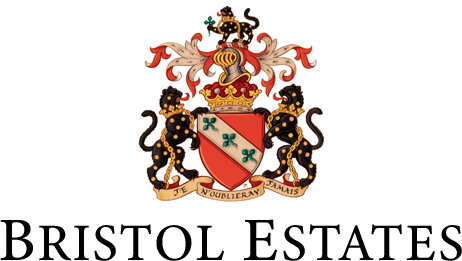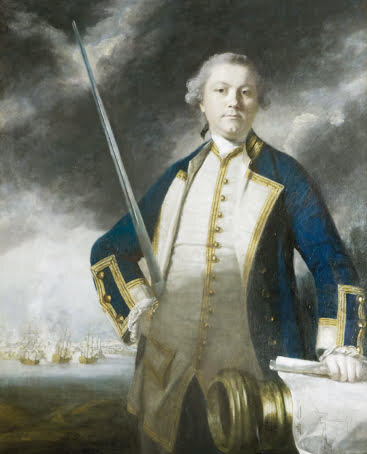A history of the Bristol family
The Hervey’s
The name ‘Hervey’ means ‘warrior of the host’ and is of Frankish origin. The Hervey family has often been considered unconventional. The 18th-century phrase ‘When God created the human race, he made men, women and Herveys’ is attributed variously to French philosopher Voltaire and to Lady Mary Wortley Montagu. Dr Johnson thought them good company: ‘If you will call a dog Hervey,’ he said, ‘I shall love him.’
The early Hervey’s
A duke of Orleans, living in the 11th century, was called Hervey, and his son was Robert Fitz-Hervey. It is this Robert who is supposed to have accompanied William the Conqueror to England in AD 1066. He is listed in various pedigrees as being the lineal ancestor of the Herveys of Thurleigh and Ickworth. There was a Hervey who was the first Bishop of Ely, promoted to that See in AD 1109. Hervey, the son of Hervey de Yuon, went to the Holy Land with Richard the Lionheart. His arms were ‘argent, & trefoil vert’ which remain part of the Hervey Arms, and those of the Marquess of Bristol today. There was also a Hervey who was Sacrist of the Abbey of Bury St Edmunds in the time of Abbot Anselm, 1121-36.
The Suffolk ancestors
Sir Thomas Hervey
The direct unbroken lineage of the present Marquess of Bristol starts with John Hervey, born circa 1290, married to Joan de la Leye of Thurleigh, Bedfordshire. His descendant was Thomas Hervey (died 1467), who was the first Hervey to live at Ickworth, Suffolk. Since that time a number of descendants made their mark. Sir Nicholas Hervey (died 1532), great-great-great-grandfather of the first Earl of Bristol, was Ambassador from Henry VIII, King of England, to Charles V, Holy Roman Emperor, and took part in the famous jousts at the Field of Cloth of Gold in 1520. Sir Thomas Hervey (died 1577) was Knight Marshal to Mary I, Queen of England. Sir William Hervey of Rosse and Kidbrooke, was involved in the defeat of the Spanish Armada in 1588, and was knighted at Cadiz by the Earl of Essex 27 June 1596. Sir Thomas Hervey (1625-94), father of John, 1st Earl of Bristol, was Member of Parliament for Bury St Edmunds from 1679 to 1690, and many members of the family represented this constituency in the House of Commons right into the 20 th century.
The 8th Marquess of Bristol unveiling a plaque to Henry Jermyn on Chatham House
Henry Jermyn
Henry Jermyn (1605-84) is the ancestral uncle of the present Marquess of Bristol, and it is due to this link that when the 5th Earl of Bristol was elevated to the Marquessate in 1826 as a subsidiary title he chose that of Earl Jermyn, which is now used as a courtesy title of the eldest son of the Marquess of Bristol. He was an English politician and one of the most powerful courtiers of his time. He was very close to Queen Henrietta Maria, wife of King Charles I, and rumoured to have been her lover and that he was even the father of King Charles II. He was Lord Chamberlain to King Charles II and contributed enormously to England’s friendship with France. During his life he was granted the title of Baron Jermyn of St Edmundsbury, and Earl of St Albans. Henry Jermyn is also nicknamed ‘the founder of the West End’ and created the first non royal London estate. He was granted a lease from Charles II on the fields of St James, Westminster, on which he built Jermyn Street, St James’s Square and the streets surrounding it.
1st Earl of Bristol
John Hervey, 1st Earl of Bristol
John Hervey (1665-1751) followed his father Sir Thomas Hervey as MP for Bury St Edmunds. On 27 March 1702/3, he was raised to the Peerage of England as Baron Hervey of Ickworth in the County of Suffolk. On 19 October 1714 he was further honoured when he was made Earl of Bristol in the Peerage of Great Britain. He married twice and fathered 20 children. He had a large impact in setting up the family for the next few hundred years. He married 2 heiresses who greatly contributed to the Bristol Estates. Firstly, he married Isabella Carre of Sleaford who brought in all the Lincolnshire estates, and secondly, he married Elizabeth Felton who helped increase the size of the Suffolk Estates but also brought in the Essex estates.
John, Lord Hervey
John, Lord Hervey
John, Lord Hervey (1696-1743), eldest son of the 1st Earl of Bristol, was a politician, courtier, writer and memoirist. He was Vice-Chamberlain of the Household and a member of the Privy Council. He became Lord Privy Seal in 1740. His memoirs of the Court of King George II from 1727-37 are some of the best written accounts of this period in existence, which also outline his close relationship with Queen Caroline. His father, 1st Earl of Bristol blamed his early death at the age of 47 on his fondness for “that detestable and poisonous plant, tea."
John, Lord Hervey was the father of 2nd, 3rd, and 4th Earls of Bristol and General the Hon. Sir William Hervey.
2nd Earl of Bristol
2nd Earl of Bristol
George, 2nd Earl of Bristol (1721-75) was the eldest son of John, Lord Hervey. He held political office, firstly as Minister in Turin (1755-8) before becoming Ambassador to Madrid 1758-61. It was during this period where he commissioned a significant amount of Ambassadorial silver to signify his status and compete with other foreign ambassadors of the time.
He was appointed Lord Lieutenant of Ireland 1766-7, and it was thanks to his influence here that his younger brother Frederick (later 4th Earl of Bristol) was elevated to Bishop of Cloyne in 1767. A large monument was erected at Downhill, the house in Ireland built by the 4th Earl in memory of his elder brother. After Ireland the 2nd Earl became Lord Privy Seal (1768-70), a position his father had held some 30 years earlier.
3rd Earl of Bristol
Augustus, 3rd Earl of Bristol
The 2nd Earl was succeeded by his brother Augustus John Hervey as 3rd Earl of Bristol (1724- 79). The 3rd Earl was a vice-admiral of the Royal Navy and a politician. He served as Chief Secretary for Ireland 1766-67. In the Royal Navy he commanded the HMS Phoenix at the Battle of Minorca in May 1756, as well as HMS Dragon at the Capture of Belle Île in June 1761, the Invasion of Martinique in January 1762, and the Battle of Havana in June 1762 during the Seven Years’ War. He went on to be First Naval Lord 1771-75. He was known as the English Casanova, due to his colourful personal life, which by his own account included deflowering a dozen Portuguese nuns.
4th Earl of Bristol
Frederick, 4th Earl of Bristol
The 3rd Earl was succeeded by his next younger brother, Frederick, who became the 4th Earl of Bristol (1730-1803). The 4th Earl of Bristol served as Bishop of Cloyne from 1767 to 1768 and as Bishop of Derry from 1768 to 1803. He is commonly known as the Earl Bishop. The majority of the hotels around the world bearing the name ‘Hotel Bristol’ are named after him, including the Bristol hotels in Paris and Vienna. It is said that Lord Bristol’s love of travelling and luxury inspired the fashion for naming a hotel the Hotel Bristol. The implication being that if Lord Bristol were in town, that is where he would stay. Sir Jonah Barrington described him as ‘a man of elegant erudition, extensive learning, and an enlightened and classical, but eccentric mind: bold, ardent, and versatile; he dazzled the vulgar by ostentatious state, and worked upon the gentry by ease and condescension.’ He was passionate about art and architectural design. He built 2 large houses in Ireland: Downhill, and Ballyscullion; before designing and commencing Ickworth House in Suffolk. Unusually as an English protestant bishop in Ireland at the time he believed in complete religious equality, giving no preference to one religion over another. In 1799 he also became the fifth Baron Howard de Walden when the abeyance of this peerage was terminated. He married Elizabeth, sister and heir of Sir Charles Davers, 6th Baronet (1737–1807), and great-granddaughter of Thomas Jermyn, 2nd Baron Jermyn, nephew of Henry Jermyn, 1st Baron Jermyn.
5th Earl and 1st Marquess of Bristol
Frederick William Hervey, 1st Marquess of Bristol
Upon the 4th Earl's death in 1803, the title passed to his son Frederick who became the 5th Earl of Bristol (1769-1859). He was a politician, MP for Bury St Edmunds, and served as Parliamentary Under-Secretary of State for Foreign Affairs 1801-03. In 1826 he was created Marquess of Bristol and Earl Jermyn, of Horningsheath in the County of Suffolk. He had a fractured relationship with his father, choosing a life of responsibility and long-term gains over short term highs. He had a significant impact in strengthening the family position and estates, helping those less fortunate than him, as well as completing the building of Ickworth.
5th Marquess of Bristol
Herbert, 5th Marquess of Bristol
Lord Herbert Hervey 1870-1960 (father of Victor, 6th Marquess of Bristol, and grandfather of the present Marquess of Bristol) became 5th Marquess of Bristol in later life after the death of his older brother Frederick, 4th Marquess of Bristol in 1951. The 5th Marquess spent a large part of his working life abroad, in particular in South America. He was Consul to Chile in 1892, Consul in Abyssinia 1907-9, Minister and Consul-General to Columbia 1919-23, and Minister to Peru and Ecuador from 1923 to 1929. He married Lady Jean Cochrane, daughter of Douglas, 12th Earl of Dundonald, and great granddaughter of the famous Thomas Admiral Lord Cochrane (later 10th Earl of Dundonald). Lord Cochrane, nicknamed by Napoleon, ‘the sea wolf’, successful in virtually all his naval actions, helped lead the navies of Chile and Brazil in their fight for independence. Patrick O’Brian is believed to have based his protagonist Jack Aubrey on him.
The present head of the family is Frederick, 8th Marquess of Bristol, who married Meredith Dunn of Weston, Massachusetts in 2018. They have a daughter, Lady Arabella Hervey, born on 8th March 2020, and a son, Earl Jermyn, born on 25th July 2022.










